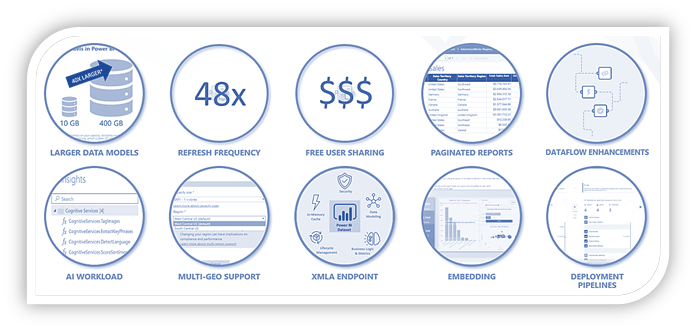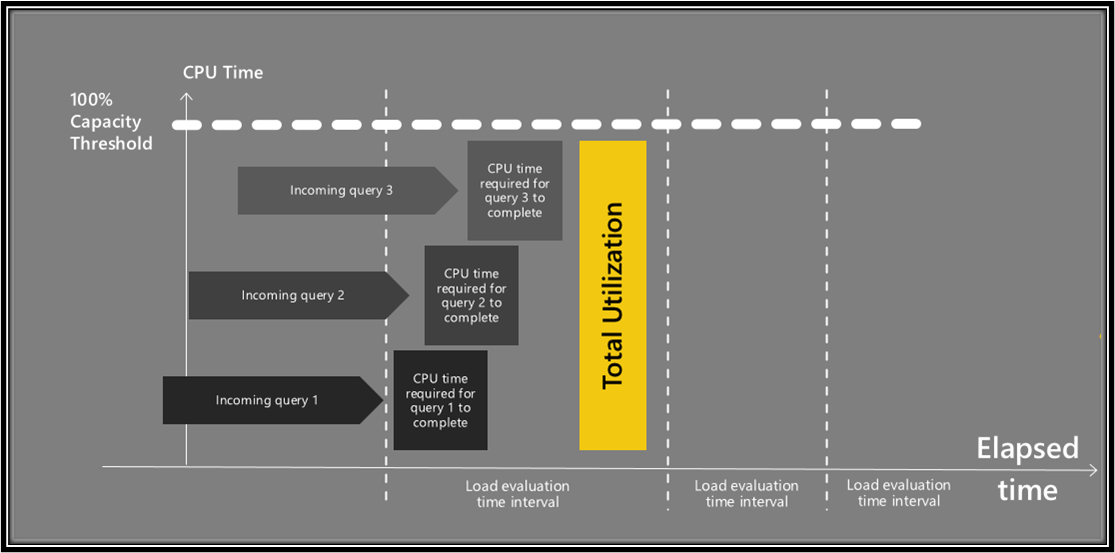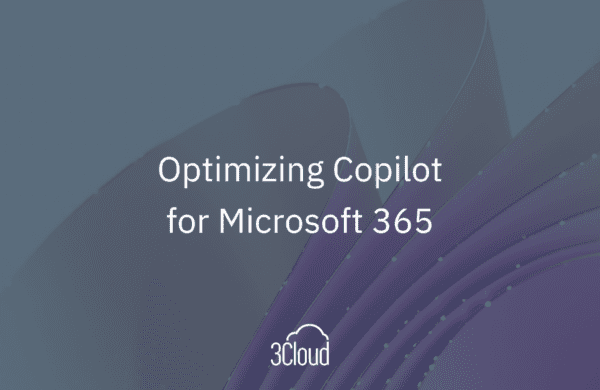Power BI Premium recently released a newer version of Power BI Premium, Power BI Premium Generation 2, referred to as Premium Gen2 for convenience. The next generation of Power BI Premium is now generally available (GA) as of October 4, 2021. This article will recap the newest features and functionality available with this release.
If you’re considering purchasing or upgrading to Power BI Premium, take a look at some of the top new features available in Gen2 offers, including:
- Faster performance
- Autoscaling capacities
- Fewer memory restrictions
- Reduced capacity management overhead
- More licensing options
If you’re new to the benefits of Power BI Premium, in general, let’s spend some time there.
What is Power BI Premium?
There are a couple of primary and several significant feature differences between Power BI Premium tenants and non-Premium tenants.
- Power BI Premium provides cloud resources dedicated only to your organization, which is analogous to purchasing a virtual machine in the cloud. Without Premium, your workspaces reside in a shared capacity.
- Power BI Premium is licensed by capacity versus licensed by user. Read-only consumers can access content with a free license when backed by a premium capacity.
In addition to gaining dedicated compute power, Premium also unlocks extra features to premium capacity workspaces:
Power BI Premium: The Next Generation
Before we get into the nitty gritty, there’s good news and even better news! The good news is that capacity management is becoming much more straightforward, the better news is end-users won’t notice any interface differences because it is consistent with Gen1.
To provide more detail, we’ve asked some characters keenly familiar with the Next Generation to explain:
Faster Performance
Gen2 offers faster performance on any capacity size than Gen1, and operations perform up to 16x faster. This enhancement is part of the architecture improvements made for background processing of content, like dataset refreshes.
The improvements allow more v-cores to perform operations, regardless of your Premium SKU. Microsoft’s diagram below shows how Gen2 evaluates and processes queries:

Autoscaling effortlessly reduces slowdowns during peak times. One v-core is added for 24-hour periods when a capacity exceeds its limits and is removed after the system detects a period of latency. These additional v-cores are optional and charged on a pay-as-you-go basis, using either a proactive or reactive limit.
Suppose you have specific times of the month or year that are considered peak, and you need compute resources to scale up during those periods automatically. In that case, autoscaling might be a welcome addition for you. Microsoft’s diagram below shows how the autoscale operation works in Gen2 capacity:
Fewer Memory Restrictions
A single dataset is no longer restricted to the original size limitations. For example, in a P1 capacity, a single dataset is no longer restricted to a 3GB compressed size, but can be as large as the total memory in the capacity (25GB).
If the P1 SKU has worked great for you in every way except having restrictions on the size of your import models, you will appreciate this enhancement.
Reduced Capacity Management Overhead
Capacity management enhancements include configurable admin notifications regarding capacity resource utilization and a new Capacity Utilization and Metrics app in AppSource.
The Gen2 app currently shows weekly trendlines and metrics on capacity usage by item, CPU, and users. Other auxiliary metrics include utilization, memory, and degradation scores. This might be a step toward covering the management of the new capacity architectural framework, but we have yet to see if sufficient bases are covered with the new app.
Microsoft’s preview of the Gen2 capacity app in AppSource:
More Licensing Options
Capacity management enhancements include configurable admin notifications regarding capacity resource utilization and a new Capacity Utilization and Metrics app in AppSource.
The Premium Per User licensing model will change the game for smaller organizations (or subsets of organizations) that need some of the advanced capabilities of Premium, but not as many dedicated resources as a Premium capacity SKU. Also, did I mention it’s only $20 per user?
In Summary
Power BI Premium has made Power BI even more powerful and flexible and the Next Generation of Premium is making its capabilities faster, easier to manage, and more accessible to smaller organizations and groups.
The true power of Power BI is inspiring end-users, decision-makers, and practitioners with the data, evidence, and insights they need. Power BI Premium Gen2 is enhancing that legacy.
Have Questions?
Our data experts will help you learn more about Power BI and how it can help you. Get started with 3Cloud today.














